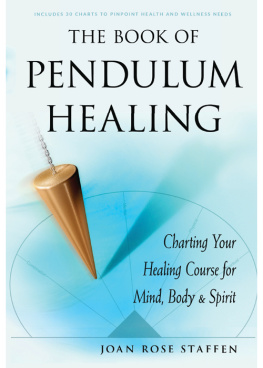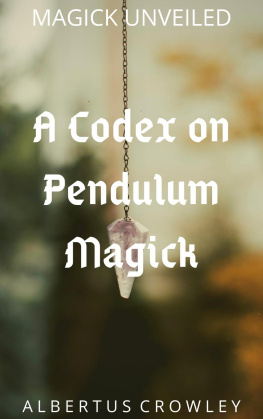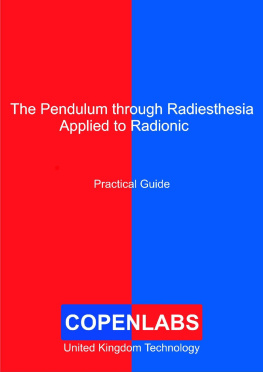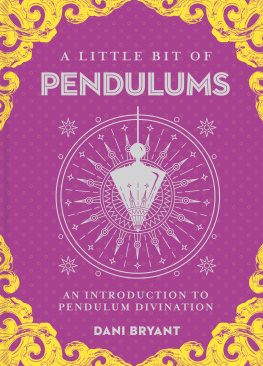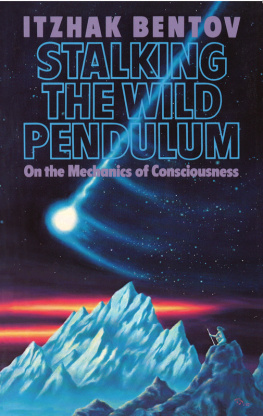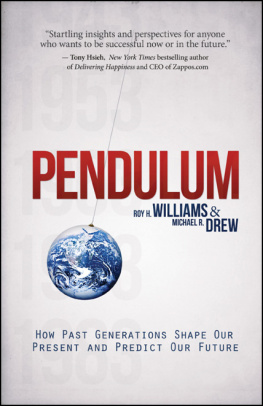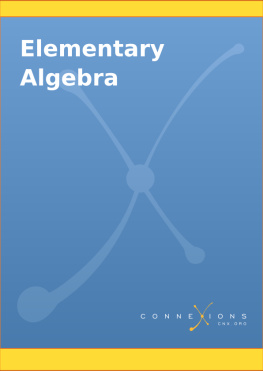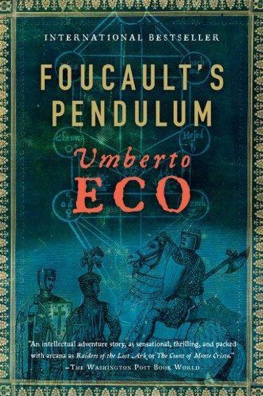F. A. Archdale - Elementary Radiesthesia & the Use of the Pendulum
Here you can read online F. A. Archdale - Elementary Radiesthesia & the Use of the Pendulum full text of the book (entire story) in english for free. Download pdf and epub, get meaning, cover and reviews about this ebook. City: Mokelumne Hill, California, year: 1961, publisher: Health Research, genre: Science fiction / Religion. Description of the work, (preface) as well as reviews are available. Best literature library LitArk.com created for fans of good reading and offers a wide selection of genres:
Romance novel
Science fiction
Adventure
Detective
Science
History
Home and family
Prose
Art
Politics
Computer
Non-fiction
Religion
Business
Children
Humor
Choose a favorite category and find really read worthwhile books. Enjoy immersion in the world of imagination, feel the emotions of the characters or learn something new for yourself, make an fascinating discovery.
- Book:Elementary Radiesthesia & the Use of the Pendulum
- Author:
- Publisher:Health Research
- Genre:
- Year:1961
- City:Mokelumne Hill, California
- Rating:4 / 5
- Favourites:Add to favourites
- Your mark:
- 80
- 1
- 2
- 3
- 4
- 5
Elementary Radiesthesia & the Use of the Pendulum: summary, description and annotation
We offer to read an annotation, description, summary or preface (depends on what the author of the book "Elementary Radiesthesia & the Use of the Pendulum" wrote himself). If you haven't found the necessary information about the book — write in the comments, we will try to find it.
Elementary Radiesthesia & the Use of the Pendulum — read online for free the complete book (whole text) full work
Below is the text of the book, divided by pages. System saving the place of the last page read, allows you to conveniently read the book "Elementary Radiesthesia & the Use of the Pendulum" online for free, without having to search again every time where you left off. Put a bookmark, and you can go to the page where you finished reading at any time.
Font size:
Interval:
Bookmark:
Elementary Radiesthesia and The Use of the Pendulum
by F. A. Archdale
There are more things in heaven and earth,
Horatio, than are dreamt of in your philosophy.
Hamlet
This little book is dedicated to Mick Archdale,
Royal Ulster Rifles, missing in Normandy, June, 1944
Published 1961
by
Health Research
Mokelumne Hill, California
This book was transcribed primarily from online sources of presumably the 3rd edition, with gaps filled in from a copy of the 1st edition. The 1st edition of the book does not contain what is here labeled as the CHAPTER VIII: SERIAL NUMBERS, COLOURS, ETC., and so there might be possible gaps and missing pieces in the content of the chapter.
It is also possible that some parts are present here, that are not present in the original 3rd edition, due to a lack of reference for the editing choices made there.
CHAPTER III: SAMPLES, TIMES, AUTO-SUGGESTION,
ADJUSTMENT OF PENDULUM, LEFT-HANDED OPERATORS
To anyone who has read any of the many articles on the subject of Radiesthesia by Mr. F. A. Archdale, which have appeared in the Press, one thing will have struck him forcibly, viz., that Mr. Archdale possessed the great faculty of being able to deal with an abstruse and highly technical subject in a popular way and had the happy knack of being able to describe his findings in language which is understandable to the beginner and the man in the street as well as to the more advanced reader.
Although I have personally read a great number of books on the subject of Radiesthesia and have by the nature of my work with my wife as Radiesthetic Consultants for the last 14 years become familiar with the Science, I may say that as soon as I read one of Mr. Archdales articles I felt that he had made an additional valuable contribution.
Up to the present time Radiesthesia has depended upon the E.S.P. (extra-sensory perception) of highly-trained individual workers, who employ either the Dowsing Rod, Pendulum or Dela-warr Detector. The reason for this is that no laboratory instrument has hitherto been devised, which has been sufficiently sensitive to record automatically the micro-waves emanating from the blood plasma system. No doubt the future will see this gap duly bridged, since many enthusiastic research workers in the field of Radiesthesia are eagerly seeking a solution. As to who will be the fortunate discoverer remains to be seen, but that it will come in due course is reasonably certain. The discovery will be momentous and will advance mankind very greatly in the crusade against disease as well as in general scientific knowledge.
I am sure that Mr. Archdales book will fill a gap and enjoy a very wide circulation and make many new friends both at home and abroad. It is the result of much study and research, founded on a long practical experience in the use of the pendulum both on the Continent and in the British Isles and so I very heartily commend it to you.
C. L. COOPER-HUNT, M.A.
Radiesthetic Consultant and Late President of the
Radionic Association of Great Britain, 1948/49.
Author of Radiesthetic Analysis.
Barton-on-Sea, Hants, England, 1956
It was with deep regret and a great sense of personal loss that we had to report the death, on July the 16th, 1953, of the founder of the Pendulum, Lt.-Col. Fulbert Audley Archdale, M.B.E. (Mlty.), after a long and distressful illness.
Colonel Archdale had that priceless gift of being able to express in simple and understandable language matters that others had seen fit to veil in almost impenetrable mystery. His Elementary Radiesthesia, of which this is the third edition, has proved a valuable handbook for many beginners who were painfully finding their way through the early stages of radiesthesic knowledge. Much of the material which he wrote for the Pendulum stood out by reason of its clarity and conciseness.
Of him may well be echoed the words of Horace, I shall not die completely, my work will live on after me.
EGERTON SYKES.
Editor of the Pendulum.
November, 1956.
The object of this little book, written by my late husband F. A. Archdale, is to introduce Radiesthesia to the beginner in its simplest form, without becoming too involved in the branches of this science which appertain to geology, minerology, medicine, etc. These he has left to others better equipped in scientific knowledge than himself. The possibilities of Radiesthesia are almost limitless, and although the science is still in its comparative infancy, new applications are being discovered daily. Its salient feature is that anyone has the ability, in greater or less degree, to work the pendulum, which is the only implement required to cover a wide field of investigation.
Radiesthesia is a fascinating subject, and there are so many branches of it that everyone, of either sex or of any age, can find a use for it. It is a science and has nothing to do with black magic, although the astounding results obtained make one wonder whether there is not some force in operation of which we know nothing.
There will be some people who will expect to make predictions, but Radiesthesia can only deal with the past and the present. Also its application and interpretations are so highly individual, that each user of the pendulum must work out his or her own method.
This third edition is much the same as the first two, and I hope that it will continue to prove as interesting and helpful.
Muriel Archdale, 1956.
There seems to be little doubt that Radiesthesia, although under another name, was practised as far back as 2000 years B.C. It is claimed that the Hebrews and Egyptians used it and that the Chinese called for a Radiesthetist before building a house, so as to detect, as they said, The Claw of the Dragon, which probably corrsponds to what we now call the nocive or harmful rays.
There is no magic in Radiesthesia; it is a faculty which most people possess and consists in their ability to receive rays or waves surrounding them and to pass them on, through muscular reflexes, to the instrument they are using, the pendulum. It is in fact a scientific investigation in which many medical men, research workers, priests, geologists and policemen have specialised.
Everybody cannot become a Radiesthetist of a high order any more than they can become great artists, musicians or cooks, but it can be developed in about 80% of human beings, some of whom, of course, will be more proficient than others either through initial adaptability to radio-perception or through training.
As far as I am aware there are no text books on, or teachers of, this subject. It must therefore be self-taught and the object of my little book is to start you off from the beginning and only deal with this interesting and useful science in a purely elementary manner. There are a great number of works on the subject in French and Italian, as both these nations seem to have made more use of it than we have in this country. Radiesthetists have different methods, although they achieve the same results or at least hope to, that is, to develop and intercept the reflexes resulting from their sensitiveness to radiations emanating from other bodies, either animal, vegetable or mineral. Radiesthesia is in no way a parlour game, it is an extremely serious and interesting subject and should be treated as such.
In telling the story of how I became acquainted with this science I must, in order to keep events in their correct sequence, cross the border-line between Radiesthesia and Teleradiesthesia, but I feel that it will only lead to confusion if I introduce the latter at this stage, so it must be left for the time being.
Next pageFont size:
Interval:
Bookmark:
Similar books «Elementary Radiesthesia & the Use of the Pendulum»
Look at similar books to Elementary Radiesthesia & the Use of the Pendulum. We have selected literature similar in name and meaning in the hope of providing readers with more options to find new, interesting, not yet read works.
Discussion, reviews of the book Elementary Radiesthesia & the Use of the Pendulum and just readers' own opinions. Leave your comments, write what you think about the work, its meaning or the main characters. Specify what exactly you liked and what you didn't like, and why you think so.



